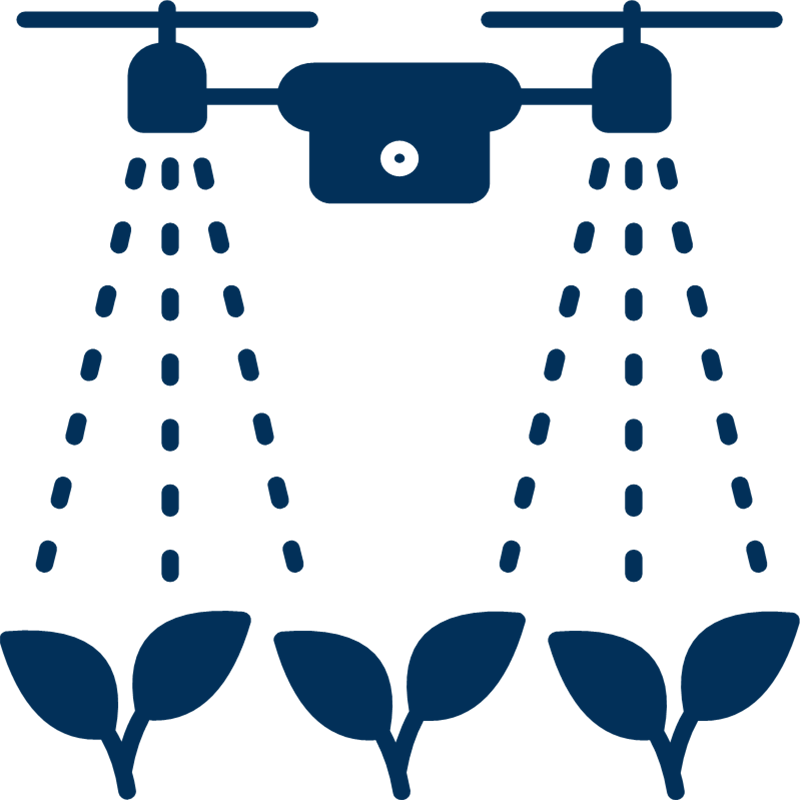Use Cases.
Our use case database tracks 133 use cases in the global enterprise technology ecosystem.
Filters allow you to explore use cases quickly and efficiently.
- (20)
- (20)
- (16)
- (10)
- (6)
- View all 9 Industries
- (2)
- (1)
- (1)
- (1)
- (2)
- (2)
- (2)
- (2)
- (2)
- View all 8 Enabled Capabilities
Selected Filters
5 use cases
|
Agricultural Drones
Agricultural drones are a class of unmanned aerial vehicle (UAV). Agriculture monitoring is among the most mature use cases for drones. The use cases value proposition is rooted in the high labor cost of monitoring a wide, rural expanse of agricultural land using traditional ground-based vehicles. In many environments, drones can cover 10 times more land than a ground-based observer in the same amount of time due to their sky-to-earth perspective and ability to fly over barriers. Drones can also be automated for routine assessments, negating entirely the need for human operation.The flight of agriculture drones may be controlled with various degrees of autonomy, ranging from the remote control by an operator located in the vicinity to fully autonomous flight coordinated by onboard computers.Drones are most often deployed in large farm holdings with varying topographic climates. They are also useful in situations where issues related to bacteria fungus, or pests are difficult to manage and require regular monitoring. In addition to cropland, drones are also deployed to monitor aquaculture and forests, as well as poultry, cattle, and other livestock.
|
|
Farm Monitoring & Precision Farming
Farm monitoring and precision farming are farm management concepts that uses sensors, data from external systems, such as weather reports, and network communciation to tailor farming operations to the specific conditions of each field. Farmers generate data via sensors and analyze the information to evaluate current practices and make improvements for greater efficiency and effectiveness. There are a variety of smart farming applications including crop observation, agriculture vehicle Tracking, irrigation management, livestock management, and storage monitoring.
|
|
Geofencing
Geofencing is a technology that uses GPS, RFID, or other location Tracking or object detection technology to define geographical boundaries. It allows administrators to set up triggers such as push notifications, email alerts, or kill switches when a device crosses a “geofence” and enters or exits an area. For example, equipment that exits a construction could be programmed to shut down beyond the borders of a Geofence in order to prevent theft. Likewise, the departure of power tools from a shop floor could trigger a text message alert. The geofencing market is segmented on the basis of components (solution and services), geofencing type, organization size, verticals, and regions. Geofencing services are further segmented into deployment and integration, support and maintenance, consulting and advisory, and API management and testing services. Market growth is driven by the connectivity of mobile assets and industrial campuses.
|
|
Industrial Wearables
Industrial wearable devices are tools designed to improve workplace productivity, safety, and efficiency in sectors such as manufacturing, logistics, and mining. These devices collect data in real time, track activities, provide alerts, and provide customized experiences depending on the users' needs and organizational objectives. They are typically designed for specific situations or industry verticals, as opposed to consumer Wearables which are often general in function. Industrial Wearables can be designed to aid a worker in performing specific tasks or to measure health parameters for working in dangerous environments. In addition to performing a specific function for their wearer, the devices can be linked to enterprise systems. For example, linking Wearables worn by employees in hazardous environments to employee welfare programs can be used to track and provide evidence of the wellbeing of employees, thereby reducing health insurance costs.
|
|
Perimeter Security & Access Control
Perimeter security and access control systems protect the external perimeters of a facility, control access to restricted areas, and detect and monitor anomalies. Access control includes the control of persons, vehicles, and materials through entrances and exists in a controlled area or premises. Perimeter detection, in contrast, is the detection of access to the outer limits of a detection area by means of physical barriers, sensors on physical barriers, or exterior sensors. Intrusion alarm systems identify entry or attempted entry of a person or an object into the area and respond to real security breaches and ignoring costly false alarm sources. Perimeter security is the first stage of intrusion security because it detects a breach and triggers an alert, which is a proactive system. Access control relates to permitting or denying access to a person or entity requesting access which is more interactive than intrusion detection, a reactive system.
|









